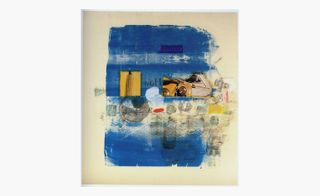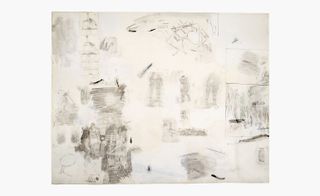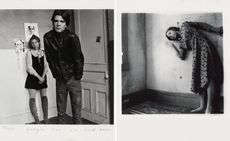Peeling back Robert Rauschenberg’s solvent transfers
An entire room at Tate Modern's widely acclaimed Robert Rauschenberg retrospective is dedicated to his transfer drawings. The focus is on one series that makes use of the technique – the renowned 1958 interpretation of Dante's Inferno. But over a two decade period, Rauschenberg created many more of these solvent transfers. A rare selection of these further, essential works are currently on display across town in Mayfair at Offer Waterman gallery, until 13 January 2017

Robert Rauschenberg first began experimenting with the medium in 1952, before his seminal Combines. But it was the late 1950s and early 60s that the artist's interest in the transferal technique accelerated, resulting in many of the works collected at Offer Waterman. Pictured, January First, 1962

These transfers anticipate Rauschenberg's iconoclastic late 60s silk screens, which appropriate elements of contemporary media, from newspapers to sports illustrated. Pictured, Umpire, 1965

Over thirty drawings are seen at Offerman's five-storey Mayfair location. They include items from important international collections along with a few, exceptional works presented for sale. Pictured, Orange Body, 1969

The transfers were made in signature Rauschenberg style, with everyday, 'non-art' objects and methods. As he commented at the time, 'The strongest thing about my work, if I must say this, is the fact that I chose to ennoble the ordinary.' Pictured, Complete Relaxation, 1958

By using images repurposed from this broad selection of media outlets, Rauschenberg was wittingly capturing a texture of the times. The resulting works are at once historical documents, a slice of the zeitgeist, and a thrilling insight into the major artist's oeuvre. Intended to complement Tate Modern's thorough retrospective, this exhibition shines a fine spotlight on one of Rauschenberg's most important, yet often overlooked, moments. Pictured, Apology, 1968
Wallpaper* Newsletter
Receive our daily digest of inspiration, escapism and design stories from around the world direct to your inbox
-
 Step into Francesca Woodman and Julia Margaret Cameron's dreamy photographs in London
Step into Francesca Woodman and Julia Margaret Cameron's dreamy photographs in London'Portraits to Dream In' is currently on show at London's National Portrait Gallery
By Katie Tobin Published
-
 Fernanda Dovigi creates a plush Aspen mountain chalet
Fernanda Dovigi creates a plush Aspen mountain chaletFernanda Dovigi’s revamped Aspen mountain chalet brings contemporary art and design to après-ski
By Léa Teuscher Published
-
 Space Un celebrates contemporary African art, community and connection in Japan
Space Un celebrates contemporary African art, community and connection in JapanSpace Un, a new art venue by Edna Dumas, dedicated to contemporary African art, opens in Tokyo, Japan
By Nana Ama Owusu-Ansah Published